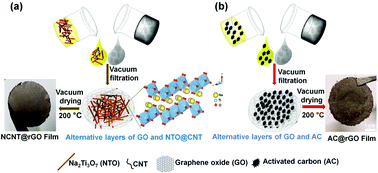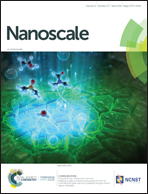Free-standing flexible film as a binder-free electrode for an efficient hybrid deionization system†
Abstract
In recent years, capacitive deionization (CDI) has emerged as an energy efficient and cost-effective technology for the desalination of brackish water. However, high energy consumption and poor desalting efficiency at high salinity levels have hampered the application of CDI for seawater (∼35 000 mg L−1). A novel method of CDI termed hybrid capacitive deionization (HCDI) employs the use of a faradaic electrode paired with a capacitive electrode. Doing so increases the salt removal capacity to approximately three times that of conventional activated carbon (AC) materials (∼10 mg g−1). Herein, we report experimental results of our HCDI cell using free-standing Na2Ti3O7–CNT@reduced graphene oxide (NCNT@rGO) film as a binder-free negative and activated carbon@reduced graphene oxide (AC@rGO) film as the positive electrode. The HCDI cell is operated under a constant current mode. During desalination, sodium ions are intercalated into the negative electrode (NCNT@rGO) whereas chloride ions are adsorbed onto the surface of the positive electrode (AC@rGO). We observed a high removal capacity of 129 mg g−1 at the low energy consumption of 0.4 W h g−1 for a salt concentration of ∼3000 mg L−1 at 50 ml min−1 flow rate. The higher performance of our electrodes over conventional ones (∼109 mg g−1, 0.68 W h g−1) is attributed to the absence of binders or conductive additives and the unique nano-architectured sandwich structure of NCNT@rGO. The advantageous features of our electrodes shed new insight into the development of CDI materials and show promise for low-cost, scalable systems.



 Please wait while we load your content...
Please wait while we load your content...